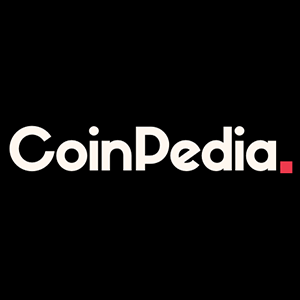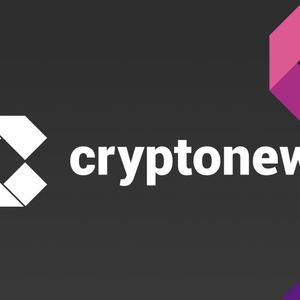BitcoinWorld Ethereum Unleashes Urgent Reforms to Boost Network Agility Are you ready for a faster, more responsive Ethereum? The world’s leading smart contract platform is on the cusp of a significant transformation. With Tomasz Stańczak, the newly appointed co-executive director of the Ethereum Foundation , at the helm of a sweeping reform effort, Ethereum is poised to streamline its operations and accelerate crucial network upgrades. This isn’t just about keeping pace; it’s about solidifying Ethereum’s position as the bedrock of decentralized finance and the broader Web3 ecosystem in an increasingly competitive landscape. The Ethereum Foundation’s Strategic Shift: A New Era of Efficiency The appointment of Tomasz Stańczak as co-executive director signals a pivotal moment for the Ethereum Foundation . His mission is clear: to inject a new level of agility and efficiency into the organization’s core operations. For years, Ethereum has thrived on its decentralized ethos, fostering innovation through a vast, global community of developers. However, this very strength can sometimes lead to slower decision-making and execution cycles, especially when compared to more centralized rivals like Solana, which boast impressive transaction speeds and rapid development. Stańczak’s vision involves centralizing certain aspects of decision-making and improving execution workflows to cut through potential bureaucratic inertia. This strategic shift is not about abandoning decentralization but rather about optimizing the engine that drives the decentralized network forward. It’s about ensuring that critical advancements can be implemented with the speed and precision demanded by the fast-evolving crypto space. Accelerating Network Upgrades: Paving the Way for Progress One of the primary objectives of Stańczak’s reform initiative is to significantly speed up network upgrades . Ethereum has undergone monumental transformations, such as The Merge, which transitioned the network from Proof-of-Work to Proof-of-Stake, and subsequent upgrades like Shanghai and Dencun, which introduced staking withdrawals and EIP-4844 for ‘proto-danksharding’ respectively. While these have been groundbreaking, the pace of their implementation has often been a topic of discussion within the community. The goal now is to reduce the time it takes to move from concept to deployment for future upgrades, which are vital for enhancing scalability, security, and overall network performance. Faster upgrades mean quicker adoption of new features, better user experiences, and a more robust platform capable of handling the ever-growing demands of on-chain finance. Imagine new features arriving not in years, but in months, dramatically improving the user experience and developer capabilities. Why is Speed So Critical for Network Upgrades? Competitive Edge: Rapid implementation of improvements keeps Ethereum ahead of or at least competitive with emerging blockchains. User Experience: Faster upgrades can mean lower transaction fees, quicker transaction finality, and new functionalities for users. Developer Enablement: A more agile development cycle allows developers to build and deploy innovative decentralized applications (dApps) more quickly. Security Enhancements: Promptly addressing potential vulnerabilities or implementing new security measures is paramount for a network handling billions in value. Boosting Crypto Agility in a Competitive Landscape The cryptocurrency world is a relentless race for innovation and adoption. While Ethereum holds a dominant position in terms of developer activity and total value locked (TVL), it faces formidable competition from networks that prioritize speed and lower costs. Solana, in particular, has emerged as a strong rival, showcasing impressive transaction throughput and a vibrant ecosystem. This competitive pressure is a key driver behind the push for greater crypto agility within Ethereum. Tomasz Stańczak’s warning, as reported by DL News, that Ethereum must act quickly to stay relevant, underscores the urgency. It’s not enough to be the first or the largest; sustained leadership requires continuous evolution and the ability to adapt swiftly to market demands and technological advancements. The reforms aim to instill a ‘move fast, but don’t break things’ mentality, allowing Ethereum to innovate rapidly while maintaining its core principles of security and decentralization. How Ethereum Plans to Enhance its Agility: Streamlined Governance: While maintaining decentralization, optimizing the core decision-making processes within the Foundation. Focused Development: Prioritizing key upgrades that deliver the most impact on scalability and user experience. Resource Allocation: Efficiently directing resources to critical areas of development and research. Faster Feedback Loops: Implementing mechanisms for quicker integration of community and developer feedback into the development pipeline. Blockchain Scalability: Addressing the Core Challenge Head-On At the heart of many of Ethereum’s challenges and the impetus for these reforms lies the ongoing quest for blockchain scalability . While Layer 2 solutions like Arbitrum, Optimism, zkSync, and Starknet have significantly offloaded transaction volume from the mainnet, the long-term vision for Ethereum involves native scalability improvements. Sharding, a process of dividing the blockchain into smaller, more manageable pieces, remains a crucial part of Ethereum’s roadmap to handle millions of transactions per second. Stańczak’s reforms are designed to accelerate the research, development, and eventual deployment of such complex technical solutions. Efficient execution within the Ethereum Foundation is paramount to translating theoretical scalability solutions into practical, deployed features that benefit the entire ecosystem. It’s a delicate balance: ensuring the network can grow exponentially without compromising its security or decentralization. The reforms aim to create a more direct path from research breakthroughs to actual code implementation, ensuring Ethereum remains at the forefront of blockchain technology. The Interplay of Reforms and Scalability: The proposed reforms directly impact the pace at which Ethereum can achieve true blockchain scalability. By streamlining internal processes and centralizing certain decision-making aspects, the Foundation can: Expedite Research and Development: Faster allocation of resources to critical scalability research areas like sharding and advanced Layer 2 technologies. Improve Coordination: Better coordination among core developers and researchers, leading to more cohesive and efficient development cycles. Accelerate Deployment: Reducing the time from feature completion to actual network deployment, bringing scalability benefits to users sooner. Institutional Adoption: Building a Predictable Foundation for Traditional Finance The increasing interest from traditional finance (TradFi) in cryptocurrency represents a massive opportunity for Ethereum. Major financial institutions, from banks to asset managers, are exploring tokenized assets, central bank digital currencies (CBDCs), and institutional DeFi solutions. For these entities, predictability, security, and a clear roadmap are non-negotiable. This growing demand for institutional engagement is a significant factor driving the need for institutional adoption and the reforms within the Ethereum Foundation. Traditional finance operates on stringent timelines and demands high levels of assurance regarding platform stability and future development. A more agile and efficient Ethereum, capable of delivering timely upgrades and maintaining a predictable development cycle, becomes far more attractive to these large-scale players. Stańczak’s efforts to centralize decision-making and improve execution directly address the concerns of TradFi, ensuring that Ethereum can meet their rigorous standards and become the preferred platform for the future of on-chain finance. Why Institutional Adoption Requires Agility and Predictability: Compliance and Regulation: Institutions need a stable and predictable platform that can adapt to evolving regulatory landscapes. Risk Management: Clear roadmaps and efficient execution reduce uncertainty, which is crucial for managing financial risks. Long-Term Planning: Large financial entities plan for years, even decades. A reliable Ethereum ensures their long-term strategies can be built on a solid foundation. Scalability for Volume: Institutional transactions often involve high volume and value, demanding a highly scalable and performable network. Navigating the Path Forward: Challenges and Opportunities While the push for reforms promises significant benefits, it’s not without its challenges. Ethereum’s strength has always been its decentralized, community-driven nature. Centralizing aspects of decision-making, even for efficiency, requires careful navigation to maintain community buy-in and prevent the perception of a top-down approach. The balance between agility and maintaining the core tenets of decentralization will be crucial. However, the opportunities are immense. A more agile Ethereum can not only solidify its leadership but also accelerate the mainstream adoption of blockchain technology. It can unlock new use cases, foster even greater innovation, and truly realize the vision of a decentralized global financial system. Actionable Insights for the Community: Stay Informed: Follow official Ethereum Foundation announcements and developer discussions to understand the evolving roadmap. Participate: Engage in community forums and discussions, providing constructive feedback on proposed changes and upgrades. Build on L2s: Continue leveraging Layer 2 solutions for efficient and cost-effective transactions, as these will remain critical for scalability. Educate Others: Help new users understand the ongoing improvements and the benefits of a more agile Ethereum. The reforms championed by Tomasz Stańczak represent a bold step forward for Ethereum. By prioritizing agility, streamlining operations, and accelerating crucial network upgrades , Ethereum is not just responding to competitive pressures but proactively shaping its future. This strategic pivot, aimed at boosting crypto agility and enhancing blockchain scalability , is essential for fostering greater institutional adoption and ensuring Ethereum remains the indispensable backbone of the decentralized world. The coming months will be critical as these reforms take root, promising a more efficient, responsive, and robust Ethereum ready to meet the demands of tomorrow’s digital economy. To learn more about the latest Ethereum trends, explore our article on key developments shaping Ethereum’s institutional adoption. This post Ethereum Unleashes Urgent Reforms to Boost Network Agility first appeared on BitcoinWorld and is written by Editorial Team


















